During COVID times, companies are familiar with pivoting. Analyzing what will help them keep moving forward during these strange times is imperative. Our company is not immune to this and we have taken time to be critical of our own process and experimented along the way. Project Retrospectives are a tool we have used in the past to help projects in general, but now we are applying learnings to processes. This helps us reflect on project details such as how things went and allows us to change our own processes. What we should keep doing and what we need to adjust.
Here are the top 3 items we learned from one of our most recent project retrospectives:
1. Documentation is key
As a small company we like to move fast and occasionally that means skipping over essential items that help projects in the long run. Specifically making sure we send out a Master of Services Agreement (MSA) and a well-defined Scope of Work document (SOW). These are two items that we have identified as essential. We have overlooked these documents in the past. This has caused a lack of guidance for our internal team and [even worse] for our clients.
What is an MSA?
An MSA ensures that both our company and our client are on the same page with legal requirements and overall project expectations. We work with different types of clients, therefore each prioritizes different things. For certain clients, an MSA is nice to have. However, for others, an MSA is essential and without one the project comes to a standstill. With one of our latest clients, the project completely stopped. This ultimately defeated our goal of moving quickly on a project to get a quality product into our clients’ hands.
What is an SOW?
An SOW should provide clarity for the team and client on the expectations of what is being created, the process, and what defines success. I’m embarrassed to say that our original SOW template had very few of these items. We took a hard look at our template and restructured it to include:
- An executive summary – who is the client, what do they do, what is the purpose of the project and how will it help the client?
- Scope & Goals – we need to identify the specific goals for the project. A high-level scope needs to be defined and shared.
- Engagement Approach – we provide a detailed plan of how the project will proceed
- List of Project Team and Client Responsibilities
- Licensing of Deliverables – an explanation of who the product belongs to after the project is completed.
- Success Criteria – We provide a brief statement of what the completed product will do. You will know the project is complete when _______.
- Terms – The above steps are proposed to be accomplished within [approved hours] period starting [date], and acceptance of this SOW by [client].
Now when there are questions during a project these two documents provide clarity and allow us to point back to it if the client brings up any questions.
2. Involve the right people from the beginning
Too often our projects have consisted of a “Silo” mentality. First, sales, then design, followed by development. This leads to poor communication and less collaboration, therefore risking the success of the project. One item that we have identified is that our awesome design team drafts up a super prototype with all the best features. Design delivers the prototype to the development team, only for them to take a look at it and say “realistically this isn’t the best way to approach this feature” or “this feature is more complicated than we originally estimated”. This leads to either exceeding the budget and/or timeline, creates frustrations among team members and our client, or worst of all, a combination of all of the above!
After identifying these frustrations during project retrospectives, our team now holds a briefing meeting to identify all the roles needed at the beginning of the project. This meeting is led by our sales representative who sold the project and had all the conversations with the client. The roles involved in this meeting include a Researcher, Lead Design, Technical Lead, and Project Manager.
If a project begins in a Draft (or prototyping) phase, we involve a Technical Lead even if they’re not developing. They are invited to reviews to ask questions and learn more about what is being designed. This helps with collaboration and allows our Technical Lead to keep a pulse on what technical needs there may be moving forward and caution the team when necessary. Our goal is less confusion in transitions and fewer surprises. This is something we are just starting to implement, so we will see how it goes!
3. Account for different types of clients
We all know that every client is different. They have different needs, ideas, and styles of communication. We have identified two types of clients over multiple projects. There are self-sufficient clients and hand-holding clients. These two types, unfortunately, can make or break a project. Let’s take a look at the hand-holding client first.
The Hand-Holding Client
A hand-holding client is one who requires more communication, interaction, and accountability. They will slow the project process down and claim more hours. Therefore, the budget will look bloated. We identified this [during a project] when we exceeded the agreed-upon budget and the length of the project. We also tracked meeting time, including internal and external meetings with the client. For a real-life example, we had a project with a budget of 333 hours. Of those hours, roughly 140 hours were spent in meetings! Taking a critical eye to those hours, we learned:
- There was a lack of clarification from the beginning of the project (insert better SOW) to pause, ask questions, and find clarification.
- The client was slow in responding to the team’s questions and delivering certain items for the project (content, technical access, etc).
- Someone from the team had to budget time to do working sessions with the client to ensure they were thinking about the project and making decisions (in a timely manner!)
To help manage expectations with the clients, we amended our SOW. We included the requirement that “Timely and active participation in conversations and feedback” was necessary. Calling out certain deliverables they are supposed to provide (e.g. setting up a SendGrid account) helped us set expectations early. During our kickoff meetings with the client, we reemphasize these items verbally and schedule any potential meetings right there and then.
The Self-Sufficient Client
Now, let’s take a quick look at a self-sufficient client. These are going to be the clients that are results-oriented, are committed to the project, and are prompt in responding to team needs, so they are not a blocker. These are the golden clients! I know as a project manager, these are the people I want to work with forever. Ironically, since they are on top of everything you actually work less with them.
How to Manage Client Expectations
Identifying which type of client you are working with from the beginning is difficult, but if you are able to do it within the first week it will help moving forward. Setting expectations in the SOW, kickoff meeting, and future conversations will only help manage the client throughout the process. Tracking those client interactions and letting them know in a gentle way where the budget is, based on those interactions, helps them see where they could be doing more. Transparency builds trust because you are looking out for their investments and resources.
What Project Retrospectives Taught Us
Project retrospectives have created space for our team to have really great discussions on how we can best move forward in refining our project process. These three takeaways are proving their value as we have started new projects and are making us stronger. I am 100% positive that we will continue to learn and refine because we all know there is no perfect answer. However, identifying what works and what is not working helps us be more successful and delivers more value to each of our clients.
Interested in more than Project Retrospectives? We’ve got ya!
- Why is Agile Software Development More Effective?
- How To Build An Impressive Product Vision Board
- What is the Importance of Lean Software Development?
- How to Leverage Consumer Insights for Innovation




